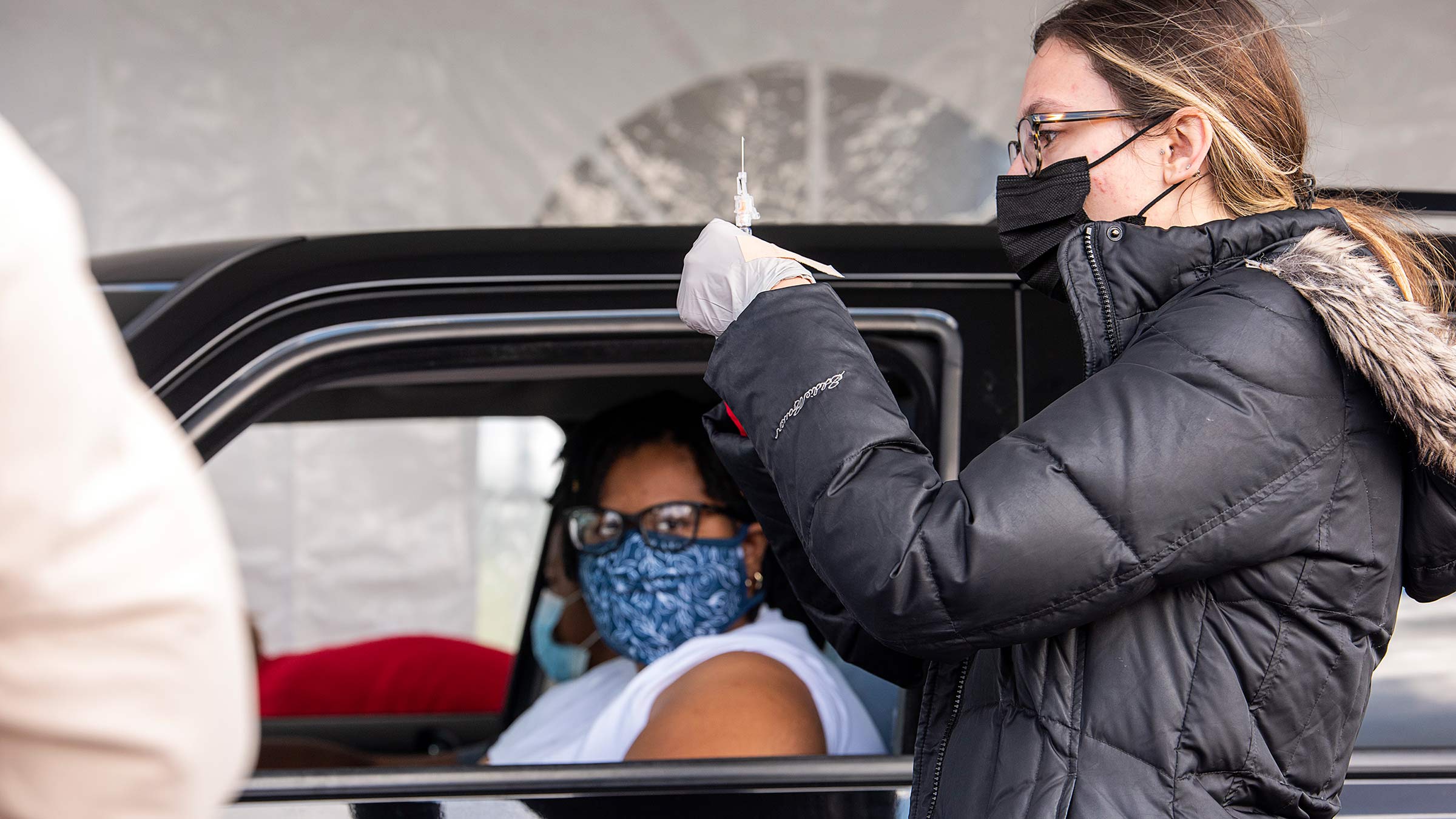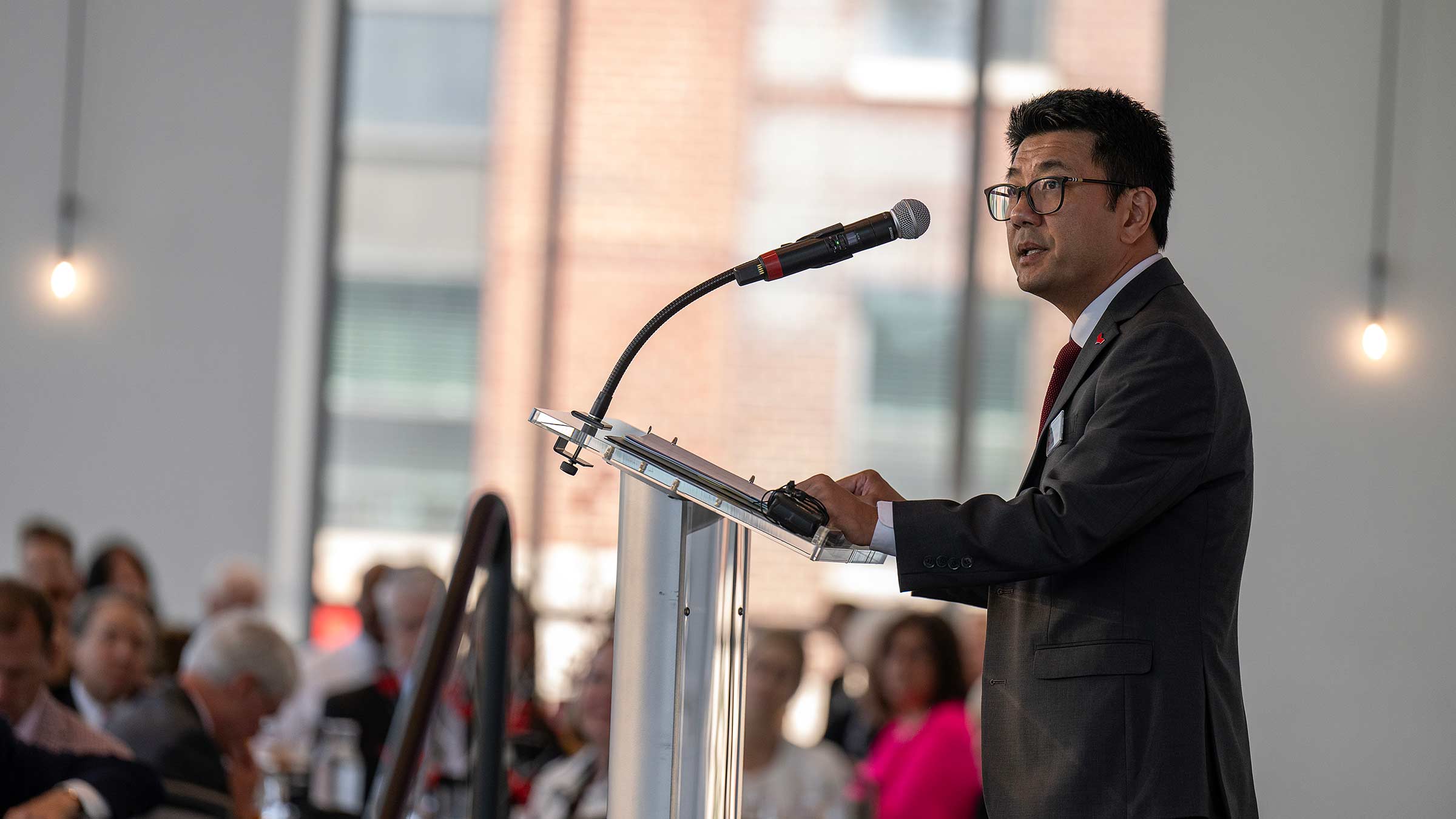
Editor’s note: This article is part of a series for The Ohio State University Wexner Medical Center’s 2022 Health Equity and Anti-Racism annual report. Read all stories in this series on the Anti-Racism Initiatives page.
When COVID-19 vaccines first became available through The Ohio State Wexner Medical Center’s mass vaccination clinics, a small team reviewing data came upon a finding that raised concerns. Vaccines were not making it into the arms of people living in certain ZIP codes in vulnerable neighborhoods around The Ohio State University East Hospital on Columbus’ Near East Side.
In response, a group made up of representatives from several departments created Community Vaccine Partners, or CVP, with one goal: to cut any red tape and link these neighbors to the vaccine. CVP partnered the Ohio State Wexner Medical Center with trusted community organizations to help ensure access to the COVID-19 vaccine for people living in vulnerable Columbus neighborhoods, particularly those with racial and ethnic minority populations.
Ohio State East Hospital provided direct access to appointments for people living in priority ZIP codes. To encourage uptake of these vaccines, teams met people where they were in life and came up with creative solutions to possible roadblocks, explains Jackiethia Butsch, senior outreach coordinator for Community and Civic Engagement.
Community health workers went door to door to let people know about the appointments and offer education to address vaccine-related concerns. Physicians had dinner with pastors to help answer vaccine questions. And neighborhood navigators from the hospital worked with partners to address unforeseen barriers, including the need for transportation or providing food for those who worried they may become housebound if they experienced vaccine side effects.
At Ohio State East Hospital’s vaccination site, the Ohio State Wexner Medical Center provided a modesty room to accommodate adherents of certain religions, and language interpreters were on site whenever needed. Team members offered a reassuring hand to hold as vaccines were administered, and they cheered with patients who were relieved of worry by getting protected. And they listened to people, learning about ways in which the CVP community organizations played a big role in their lives.
The efforts reached nearly 14,000 residents in priority ZIP codes with approximately 27,000 vaccine doses. Working with church pastors, the medical center started up a more accessible COVID-19 testing site and works through the CVP to link community members with testing as needed.
The success of CVP can largely be attributed to its team approach with faith-based organizations, immigrant advocacy organizations and other nonprofits, which has allowed the group to pivot and become Community Valued Partners, with the new name indicating that goals now reach well beyond COVID-19 response. It’s likely they also will reach beyond Ohio State East Hospital neighborhoods as more community groups in central Ohio seek to join the coalition.
CVP still views its main goal as ensuring people in at-risk communities have COVID-19 resources, but it also helps spread information on other health issues, such as the importance of colonoscopies, ways to reduce the risks of falls and why it’s important to have a primary care provider. The medical center has co-sponsored job fairs with CVP and held panel discussions and town hall meetings, and partners have helped recruit volunteers for the Ohio State Wexner Medical Center anti-racism committees and discussions.
Other goals are to increase participation in specific programs that help address disparities, such as the Moms2B program that works to reduce infant mortality. Additional possibilities for the future include “coffee chats” and roundtable community meetings that foster discussion, two-way learning and additional collaboration.
CVP started with five partners in 2019 and had grown to 40 by spring 2022. Butsch has set a goal of recruiting an additional 35 partners by the end of the year. She also envisions partnerships beyond Ohio State East Hospital to reach people in vulnerable neighborhoods across the medical center’s service area.
The community-based nature is a key to the success of CVP, Butsch says, specifically partnerships with organizations that members of the community trust, which in turn helps build similar trust between community members and the Ohio State Wexner Medical Center. And the medical center is ready to assist partners with any number of health- and social-related activities.
The coalition is just one of many ways Ohio State East Hospital and other medical center staff reach out to connect with people in vulnerable neighborhoods.
As part of its efforts, the Ohio State Wexner Medical Center’s state-of-the-art Community Care Coach also was used for vaccinations and other COVID-19 response activities, having debuted just two months before the pandemic hit Ohio. It makes three or four visits each week to provide walk-up or scheduled COVID-19 vaccinations, as well as primary care, in underserved neighborhoods. The unit makes stops at the Shepard branch of the Columbus Metropolitan Library, at All People’s Fresh Market and at Epworth United Methodist Church, where it also provides Ob/Gyn services. While it still offers COVID-19 care, it’s been able to return to offering additional care.
Community outreach helps show the community that Ohio State East Hospital isn’t just a place where people go when they’re sick, but a resource where people can get support to be and stay healthy. Working with the community is the best way to make this happen, says Butsch, who meets with partners on a regular basis to identify needs in the community.
“It’s really creating a two-way street partnership with community,” she says. “This is a golden opportunity to really learn from the community and to learn from these organizations, so it makes sense to work side by side as community partners.”

We’re removing barriers to better health and wellness
See how Ohio State is elevating experiences and outcomes for every patient, employee, learner and community member.
Read More



